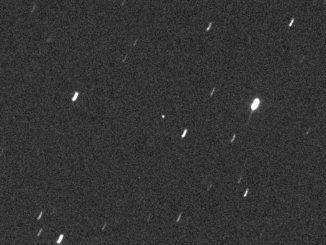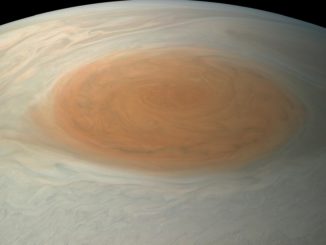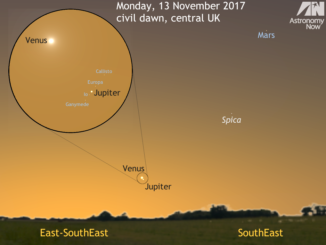
So it was that two European amateur videographers saw more than they bargained for when subsequently reviewing their digital footage from the early hours of 17 March — a flash of light lasting less than a second on Jupiter’s limb, possibly from the impact of a comet or asteroid.
Gerrit Kernbaur observes Jupiter from Mödling, Austria, with a Sky-Watcher 8-inch f/5 Newtonian. Since the seeing was poor at the time of recording his video on 17 March, Kernbaur wasn’t in a hurry to process it. However, on reviewing the data ten days later, he noticed a fleeting spot that appears on the edge of Jupiter in line with Galilean moons Europa and Io close on the west side of their parent planet. From Kernbaur’s calculations, the event occurred at 00:18:33 UTC. Did anyone else witness it for confirmation?
Serendipitously, 1045 miles to the west in Swords, just north of Dublin, Irish amateur John McKeon was also recording Jupiter with his Celestron 11-inch Schmidt-Cassegrain telescope. McKeon used a ASI120mm camera equipped with an infrared filter for a 3.5-hour timelapse video of the planet and its Galilean moons. He recorded the event in the penultimate video capture of the night, calculating the time to be 00:18:45 UTC.
While there is a slight discrepancy between Kernbaur and McKeon’s timings, it is virtually certain that they recorded the same phenomenon. So, was it an impacting comet or an asteroid? Whatever it was, the event doesn’t appear to have left its mark in the churning cloud tops of Jupiter, unlike similar recent impacts that occurred on 19 July 2009, 3 June 2010, 10 August 2010 and 10 September 2012.
Did you witness the phenomenon or image it? If so, please tell us about your experience.



